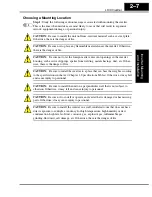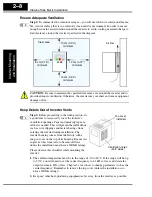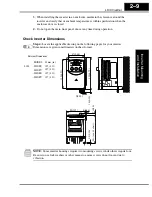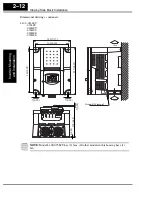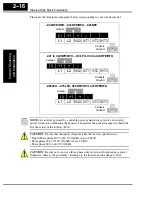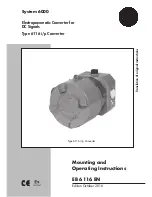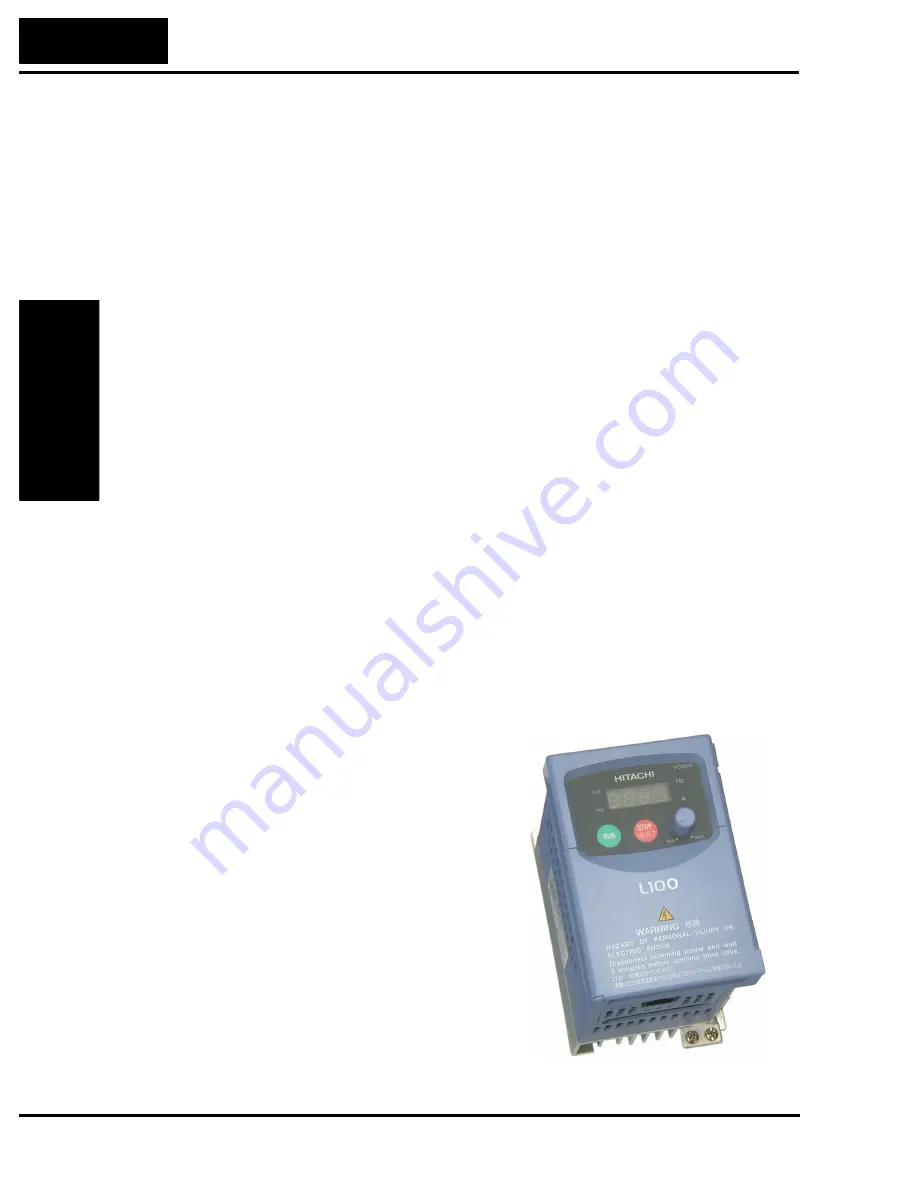
Orientation to Inverter Features
In
v
e
rt
er Mounting
and Installation
2–2
Orientation to Inverter Features
Unpacking and Inspection
Please take a few moments to unpack your new L100 inverter and perform these steps:
1.
Look for any damage that may have occurred during shipping.
2.
Verify the contents of the box include:
a.
One L100 inverter
b.
One Instruction Manual with self-adhesive label for the inverter
c.
One L100 Quick Reference Guide
d.
One packet of desiccant—discard (not for human consumption)
3.
Inspect the specifications label on the side of the inverter. Make sure it matches the
product part number you ordered.
Main Physical Features
The L100 Series inverters vary in size according to the current output rating and motor
size for each model number. All feature the same basic keypad and connector interface
for consistent ease of use. The inverter construction has a heat sink at the back of the
housing. The larger models include a fan(s) to enhance heat sink performance. The
mounting holes are pre-drilled in the heat sink for your convenience. Never touch the
heat sink during or just after operation; it can be very hot.
The electronics housing and front panel are built onto the front of the heat sink. The
front panel has three levels of physical access designed for convenience and safety:
•
First-level access
– for basic use of inverter and editing parameters (power ON)
•
Second-level access
– for editing parameters and wiring control signals (power ON)
•
Third-level access
– for wiring the inverter power supply or motor (power OFF)
1. First-level Access
- View the unit just as it
came from the box as shown. The four-digit
display can show a variety of performance
parameters. LEDs indicate whether the
display units are Hertz or Amperes. Other
LEDs indicate Power (external), and Run/
Stop Mode and Program/Monitor Mode
status. Membrane keys Run and Stop/Reset,
and a Min/Max frequency control knob
control motor operation. These controls and
indicators are usually the only ones needed
after the inverter installation is complete.
You can also access the modular jack for
connecting a programming or monitoring
device such as a PC (see Chapter 3). And,
you can access the two chassis GND screws
on the metal tab at the bottom of the inverter.




















